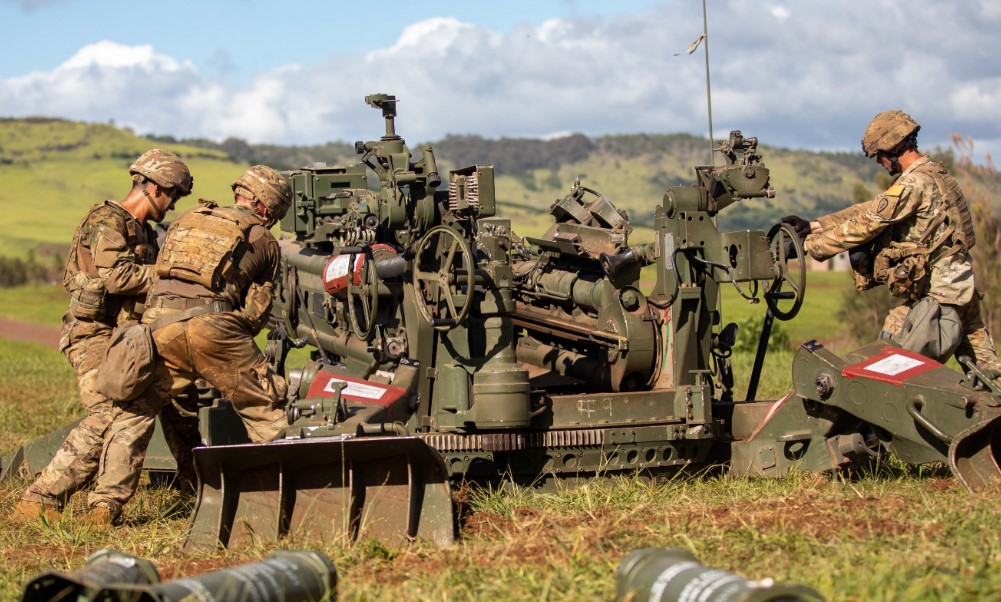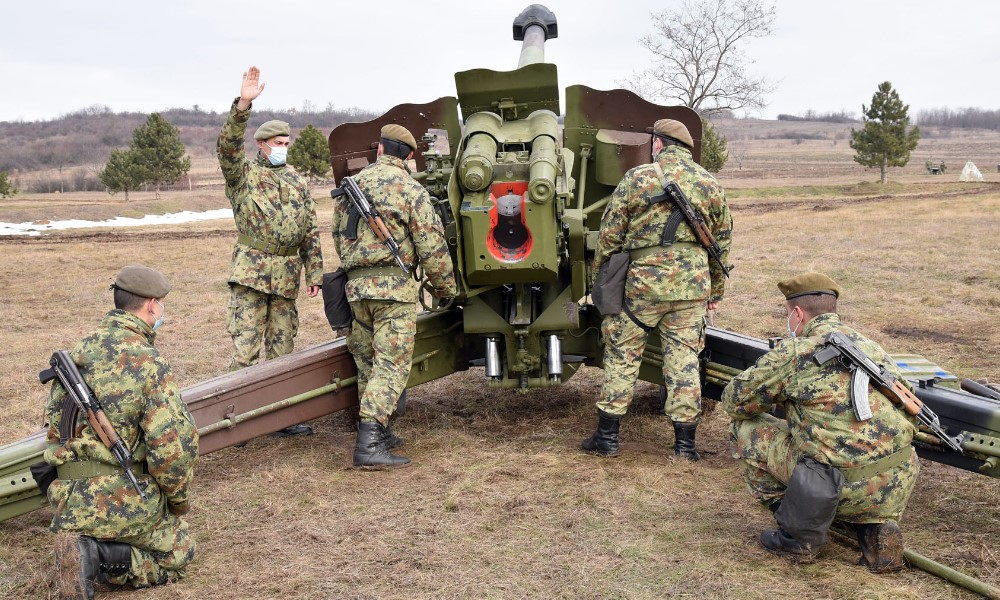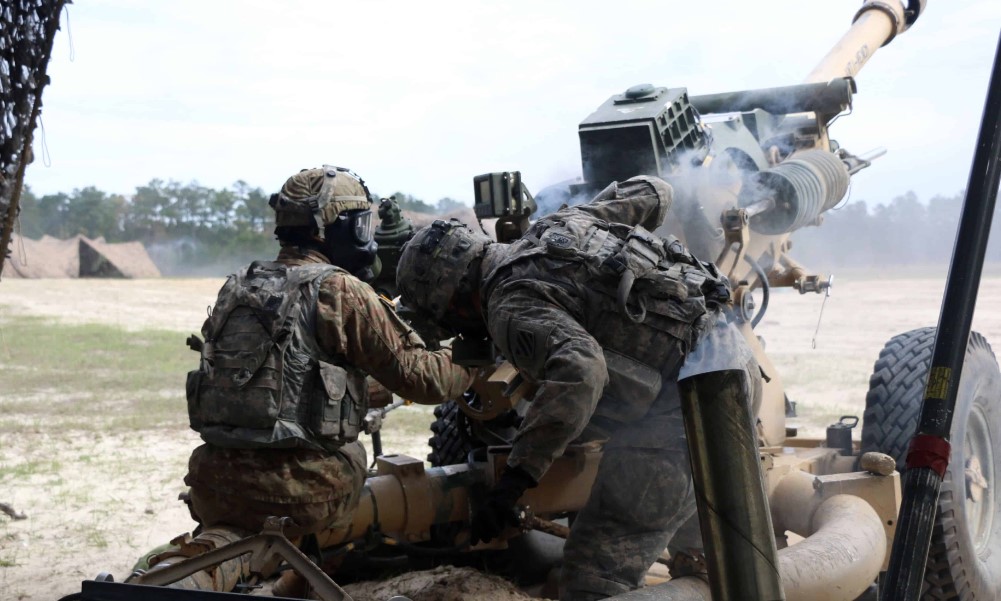Artillery division systems have long been the backbone of many military operations, providing crucial firepower in both defensive and offensive engagements. Over the years, artillery systems have seen significant advancements, particularly in terms of mobility, firepower, precision, and automation. This article delves into the most cutting-edge artillery division systems available in 2024, offering detailed insights into their features, real-world applications, and how they contribute to modern military tactics.
What is an Artillery Division and Why is it Important?

An artillery division refers to a large-scale military unit responsible for deploying long-range firepower to support ground troops.
This division operates advanced weaponry designed to launch shells, rockets, or guided missiles over vast distances, ensuring that enemy targets are neutralized before they can pose a threat to frontline forces.
Artillery divisions have historically been pivotal in both defensive operations, where they provide covering fire, and offensive maneuvers, where they help weaken enemy positions before an infantry advance.
Key Components of an Artillery Division

An artillery division plays a pivotal role in military operations by delivering powerful, long-range fire support. It consists of several key components, each with distinct features and capabilities. Here are the primary components of an artillery division:
1. Self-Propelled Howitzers
Self-propelled howitzers are mobile artillery systems mounted on armored vehicles. These units combine firepower with mobility, allowing them to reposition quickly on the battlefield.
- Features:
- Mobility: Tracked or wheeled for rapid movement in various terrains.
- Firepower: Can fire shells up to 30 km or more.
- Technology: Integrated with GPS-guided targeting systems for accuracy.
Use Case: Self-propelled howitzers like the M109A7 Paladin are essential for supporting mechanized units in fast-paced operations, providing mobile, long-range firepower.
2. Rocket Artillery
Rocket artillery systems are designed for long-range, high-volume bombardment. They launch rockets in rapid succession, covering a wide area with firepower.
- Features:
- Range: Capable of reaching up to 90 km, like the BM-30 Smerch.
- Firepower: Multiple rockets fired simultaneously, saturating large areas.
- Navigation: Equipped with inertial and satellite guidance systems.
Use Case: Ideal for large-scale offensive operations to suppress or neutralize enemy forces at long distances.
3. Towed Artillery
Towed artillery units are more traditional, stationary systems. They are pulled by vehicles into position and offer cost-effective, long-range firepower.
- Features:
- Cost-Effective: Less expensive than self-propelled systems.
- Range: Can reach up to 20-40 km.
- Deployment: Requires setup but offers powerful strikes once in position.
Use Case: Towed artillery is often used in defensive operations or pre-planned offensive strikes where mobility is less crucial.
4. Mortar Systems
Mortars are short-range artillery systems designed for close support, typically deployed by infantry units.
- Features:
- Range: Typically between 1-5 km.
- Portability: Lightweight and portable, easy to deploy.
- Flexibility: Can deliver high-angle fire, making them effective in rough terrain or urban environments.
Top 5 Artillery Division Systems in 2024: In-Depth Review

1. M109A7 Paladin Self-Propelled Howitzer
The M109A7 Paladin is a versatile self-propelled howitzer that has been a staple of the U.S. Army’s artillery division. Built for both mobility and firepower, this system can rapidly deploy and reposition on the battlefield, offering significant advantages in modern, fast-paced warfare.
Features:
- Range: The M109A7 Paladin can strike targets up to 24 km away with conventional rounds. With rocket-assisted projectiles, it can extend its range to over 30 km, making it highly effective in both offensive and defensive operations.
- Rate of Fire: It can deliver up to 4 rounds per minute, allowing for sustained firepower during intense engagements.
- Mobility: As a tracked vehicle, the M109A7 is built for rugged terrain and can keep pace with mechanized infantry units.
- Technology: This system is equipped with advanced GPS-guided targeting systems, which significantly enhance accuracy and reduce collateral damage.
Use Case:
The M109A7 Paladin is ideal for rapid response scenarios where both mobility and high firepower are needed. It is often used to support infantry and mechanized units during offensive operations, providing immediate fire support when and where it’s needed most.
Advantages:
- High mobility allows for quick repositioning.
- Advanced targeting systems improve accuracy.
- Highly adaptable to different types of combat operations.
Disadvantages:
- Expensive to maintain due to advanced components.
- Requires a well-trained crew to operate effectively.
Price: Approx. $10 million
Where to Buy:
You can purchase the M109A7 Paladin from Military Products Hub, a leading distributor of advanced military systems.
2. BM-30 Smerch Rocket Artillery System
The BM-30 Smerch is one of the most powerful multiple rocket launcher systems available today. Known for its devastating long-range capabilities, it is a critical asset for militaries aiming to deliver large-scale bombardments over vast distances.
Features:
- Range: The BM-30 Smerch can launch rockets up to 90 km, making it one of the longest-range artillery systems available.
- Firepower: The system is capable of launching up to 12 rockets in under 40 seconds, which can saturate large enemy formations and fortifications.
- Technology: Advanced inertial and satellite-based navigation systems ensure high precision, even at extreme ranges.
Use Case:
The BM-30 Smerch is typically deployed in large-scale offensive operations, where long-range bombardments are required to weaken enemy forces before an infantry assault. It is also used in defensive roles to keep enemy forces at bay from a distance.
Advantages:
- Exceptional range allows for strikes far beyond enemy lines.
- Can deliver a high volume of fire in a short period.
Disadvantages:
- Limited mobility compared to smaller artillery systems.
- Requires significant logistical support due to its size.
Price: Approx. $15 million
Where to Buy:
To procure the BM-30 Smerch, visit Defense Systems Online for purchasing details and consultations.
3. CAESAR 8×8 Self-Propelled Artillery
The CAESAR 8×8 self-propelled howitzer offers a unique combination of firepower, mobility, and ease of deployment. Unlike tracked systems, the CAESAR uses an 8×8 wheeled configuration, allowing it to operate on a variety of terrains while still delivering formidable artillery support.
Features:
- Range: The CAESAR can engage targets up to 40 km away, making it suitable for medium to long-range artillery missions.
- Mobility: Its wheeled configuration provides enhanced speed and maneuverability, especially on roads and hard terrain, allowing for quick repositioning.
- Firepower: It can fire 6 rounds per minute, providing consistent support during sustained engagements.
Use Case:
The CAESAR is best suited for military forces that need quick-deployable artillery capable of supporting rapid advances in enemy territory. Its wheeled configuration allows it to move quickly between positions, delivering artillery strikes with minimal downtime.
Advantages:
- Highly mobile and can be deployed quickly in various environments.
- Requires a smaller crew than tracked artillery systems.
Disadvantages:
- Less armor protection compared to tracked systems.
- Limited in rough terrain compared to tracked systems.
Price: Approx. $7 million
Where to Buy:
Purchase the CAESAR 8×8 from Global Armament, which specializes in defense procurement for governments and military organizations.
4. PzH 2000 Self-Propelled Howitzer
The PzH 2000 is a highly advanced self-propelled howitzer developed by Germany. Known for its automation and firepower, it is one of the most powerful artillery systems used by NATO countries.
Features:
- Range: The PzH 2000 has an operational range of up to 30 km with standard ammunition and up to 50 km with extended-range shells.
- Automation: Fully automated loading and fire control systems ensure rapid firing and increased efficiency during combat.
- Firepower: The PzH 2000 can fire up to 12 rounds per minute, providing unmatched fire support during critical moments in battle.
Use Case:
The PzH 2000 is designed for high-intensity conflicts where sustained firepower and rapid reload capabilities are crucial. It is often deployed in support of NATO forces during both defensive and offensive operations.
Advantages:
- High rate of fire and extended range.
- Advanced automation reduces crew workload and improves operational efficiency.
Disadvantages:
- Requires extensive training for optimal use.
- High maintenance costs due to sophisticated components.
Price: Approx. $13 million
Where to Buy:
For detailed purchasing information, visit Military Products Hub for consultations on the PzH 2000.
5. DANA M2 Wheeled Self-Propelled Howitzer
The DANA M2 is an economical yet effective self-propelled artillery system that combines mobility with mid-range firepower. With its 8×8 wheeled configuration, it is easy to deploy and transport.
Features:
- Range: The DANA M2 can strike targets up to 25 km away.
- Technology: Equipped with a modern digital fire control system, the DANA M2 ensures that each strike is accurate.
- Mobility: Its wheeled structure makes it highly mobile and capable of rapid deployment, especially in environments where speed is crucial.
Use Case:
The DANA M2 is ideal for forces that require quick and flexible artillery support but do not need the extended range of more expensive systems. It is often used in fast-moving operations where artillery support needs to keep pace with advancing infantry.
Advantages:
- Highly mobile and easy to transport.
- Affordable compared to other systems.
Disadvantages:
- Limited range compared to other self-propelled artillery.
- Less suitable for high-intensity battles requiring sustained firepower.
Price: Approx. $5 million
Where to Buy:
The DANA M2 is available for purchase at Global Armament, offering flexible purchasing options for military organizations.
Comparison Table: Best Artillery Division Systems in 2024
| Artillery System | Range | Rate of Fire | Mobility | Price | Use Case |
|---|---|---|---|---|---|
| M109A7 Paladin | 24-30+ km | 4 rounds/min | Tracked | $10 million | Mobile fire support |
| BM-30 Smerch | 90 km | 12 rockets/min | Limited | $15 million | Long-range bombardment |
| CAESAR 8×8 | 40 km | 6 rounds/min | Wheeled | $7 million | Rapid deployment, medium-range strikes |
| PzH 2000 | 30-50 km | 12 rounds/min | Tracked | $13 million | High-intensity battles |
| DANA M2 | 25 km | 5 rounds/min | Wheeled | $5 million | Fast-moving operations |
Benefits of Using Advanced Artillery Systems in Modern Warfare
1. Precision and Accuracy
Modern artillery systems, such as the M109A7 and PzH 2000, integrate advanced GPS-guided systems that provide unparalleled accuracy, ensuring that each strike hits its intended target. This is crucial in minimizing collateral damage, especially in urban environments or when operating near friendly forces.
2. Increased Mobility
Self-propelled artillery like the CAESAR 8×8 and DANA M2 offer enhanced mobility, allowing military forces to quickly reposition and deliver fire support where it’s needed. These systems can operate in a variety of terrains, making them versatile tools in both offensive and defensive operations.
3. High Firepower and Rate of Fire
Artillery systems such as the PzH 2000 and BM-30 Smerch can deliver devastating firepower over extended periods. Their ability to sustain high rates of fire makes them indispensable during prolonged engagements, providing continuous support to ground forces.
4. Flexibility in Deployment
From the long-range capabilities of the BM-30 Smerch to the rapid-deployment of the CAESAR 8×8, modern artillery systems offer flexibility in how and where they can be used. This adaptability is essential in dynamic combat situations where conditions change rapidly.
5. Technological Integration
Systems like the M109A7 and DANA M2 incorporate digital fire control and GPS-based navigation, ensuring that each round is as effective as possible. These advancements also reduce the margin of error, making artillery support safer for both the operators and nearby forces.
Where to Buy Artillery Division Systems
Purchasing military-grade artillery systems is a complex process that involves authorized dealers and government approvals. Here are three trusted sources where military organizations can procure artillery systems:
- Military Products Hub – This distributor offers a wide range of self-propelled and towed artillery systems, including the M109A7 and PzH 2000. They provide global delivery and support.
- Defense Systems Online – Specializing in rocket artillery and long-range systems, they offer the BM-30 Smerch along with expert consultations for military procurement.
- Global Armament – This supplier offers affordable options like the DANA M2, catering to both small and large military forces with flexible purchasing options.
5 Frequently Asked Questions (FAQs)
1. What is the primary role of artillery in modern warfare?
Artillery provides long-range fire support to infantry and mechanized units, helping to neutralize enemy forces before ground troops advance. It can be used for both offensive and defensive operations.
2. How far can modern artillery systems fire?
Ranges vary depending on the system. For example, the BM-30 Smerch has a range of 90 km, while systems like the M109A7 Paladin have a range of 24-30+ km.
3. Can these artillery systems be deployed quickly?
Yes, many modern systems, like the CAESAR 8×8 and M109A7 Paladin, are designed for rapid deployment, making them highly effective in fast-paced combat scenarios.
4. Are artillery systems expensive to maintain?
Yes, artillery systems, especially advanced ones like the PzH 2000 and M109A7 Paladin, require regular maintenance and skilled operators, which can add to the overall cost.
5. Where can I buy artillery systems?
Military organizations can purchase artillery systems from authorized distributors such as Military Products Hub and Global Armament.